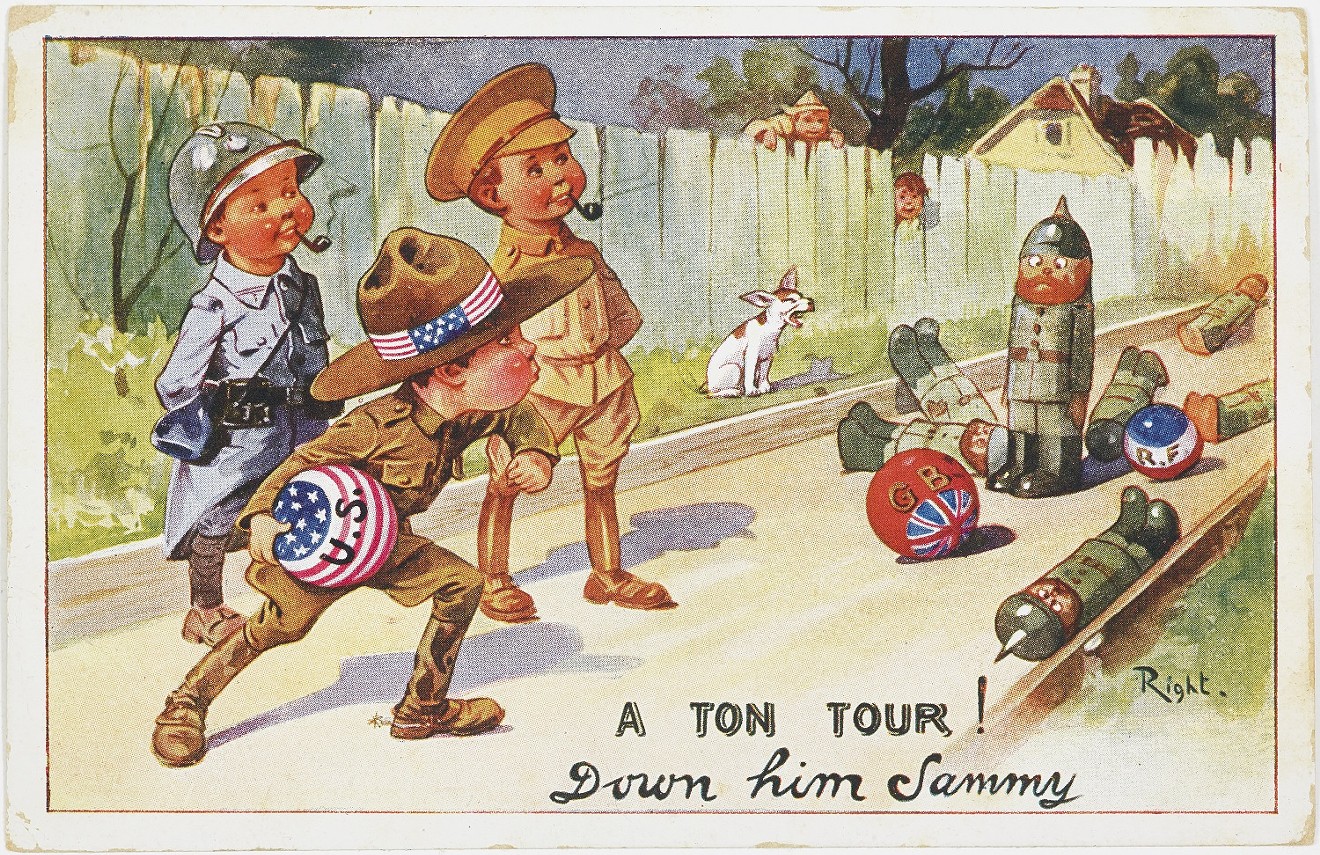It's not subtle. Propaganda never is, according to Frank Luca, professor at Florida International University and chief librarian at the Wolfsonian-FIU. He recently guided the curation of a collection of World War I propaganda on display at the Wolfsonian titled "Wit as Weapon." In it, an image that might remind viewers of the Trump cartoon depicts Kaiser Willhelm II leading a toy army with a chamber pot on his head.
"That’s one of the things that I like about history," Luca reflects. "There’s nothing new in the world; it’s just that we’ve forgotten the past, so we’re seeing it as new today."
While our current political moment is more often compared to pre-Nazi Germany than World War I, Luca's American Movies course nevertheless tackled the films and iconography of that era throughout this past spring semester. As part of their final, his students were given the option to either write a paper or curate a presentation of art from that period. Only three students — Stephanie Diaz, Christoph Stotts, and Ayme Cameron — took on the art challenge.
"This is their selection, their ideas," Luca says. "The only thing that we did was we worked on the grammar and the literary aspects of it a little bit."

Detail from John Hassall's book Ye Berlyn Tapestrie: Wilhelm’s Invasion of Flanders.
The Wolfsonian-FIU, the Mitchell Wolfson Jr. Collection
"What was most surprising, and probably disturbing too, was realizing just how many ways propaganda could take place," says Diaz, herself an aspiring curator, "the extent that propagandists were willing to go, digging deeper into the psychological vulnerabilities of their opponent."
This digging was also clearly exercised on the psyches of their audience. Multiple depictions of devils and pigs balance child's play with a fight for our collective soul and humanity. You might almost catch yourself thinking the fever-pitch symbolism is quaint in its drama until you realize this was how people got their news.
For Luca, that realization is vital to understanding how this art worked. "That’s part of the mission of this museum, to not just look at fine art, but to look at how art has been used as political persuasion so that we can see how we’re manipulated by art."
"I think it has never been more relevant than now in our modern era," Diaz adds. "With several platforms available to us on the internet, social media especially, it is becoming more challenging to identify the intentions of all of the content out there."

Broadside of Barron Gift Collier's Morning Prayer (c. 1918).
The Wolfsonian-FIU, the Mitchell Wolfson Jr. Collection of Decorative and Propaganda Arts
"The title, like the various propaganda and satire displayed in the exhibit, has multiple layers of meanings," Stotts says. "[Satire] can be used at any time by anyone in peace and war, in both politics and in the method of total war that occurred during [WWI]." Of the pieces he helped select, he advises that viewers "take the time to try to view them from multiple perspectives."
"An open mind sounds really good. To me, that just means you’re empty-headed," Luca says. "One idea comes in until the next idea comes in and knocks it out.
"There’s always an agenda to art, even in times of peace. So for me, coming in with a critical mind and saying, OK, what’s underneath the image? How is it manipulating me? What’s it doing subliminally and what’s it doing overtly? Who’s doing it? Who’s the intended audience? I think those kinds of questions are important to ask."
"Wit as Weapon." 10 a.m. Thursday, August 2, through January 13, 2019, at the Wolfsonian-FIU, 1001 Washington Ave., Miami Beach; 305-531-1001; wolfsonian.org. Admission costs $12.











